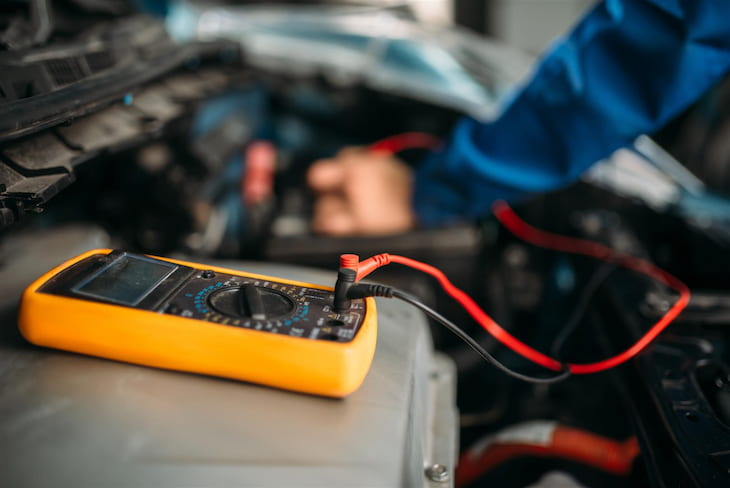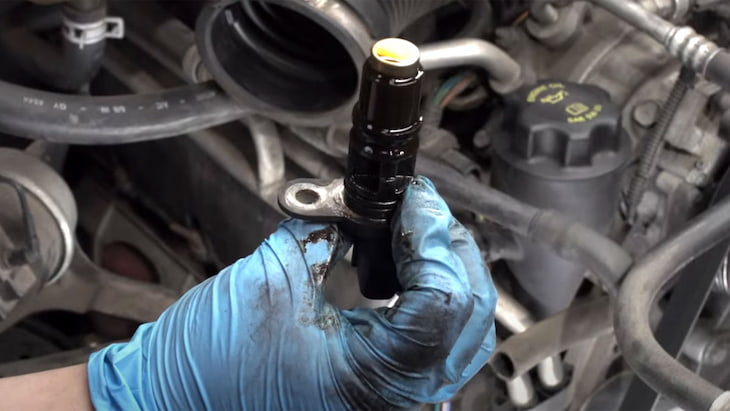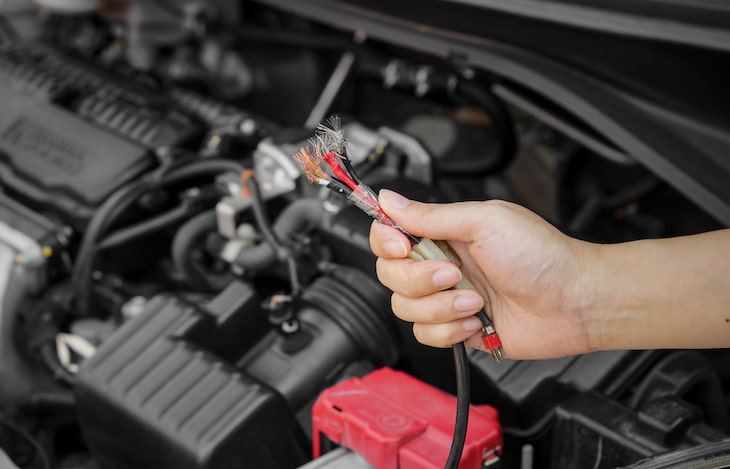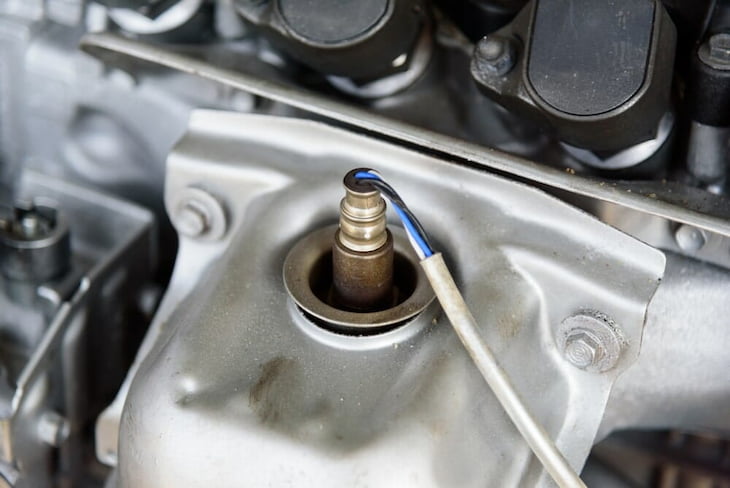From engine and interior temperature regulators, to parking and pedestrian proximity locators, modern cars can come equipped with as many as 200 electrical sensors. And while we’ve all cast a wary eye at having so many electrical components, the fact is they give us levels of performance and reliability that wouldn’t be possible otherwise.
With as many as 30 electrical engine sensors alone measuring everything from oil pressure to air flow, today’s high-performance 4-cylinders are capable of cleanly and efficiently producing horsepower on par with the V8s from only a generation ago. Electronic engine management has evolved into a science because of electrical sensors.
Some sensors are more important than others though, and your camshaft and crankshaft position sensors are among them. Both are directly responsible for engine timing, and if either fails, your vehicle might refuse to run or start. Let’s take a moment to understand just how important they are, and how you can quickly identify when they’re experiencing problems.

Get to Know Your Electric Positioning Sensors
Believe it or not, OE camshaft and crankshaft position sensors are two of the most durable car electrical parts on your vehicle, and they’ll typically function fault-free throughout the entire life of your vehicle. Most modern vehicles have both sensors; and while plenty of cars still only have a crankshaft sensor, dual- and quad-cam cars can have between 2 – 4 camshaft sensors.
No matter how your car’s engine is configured, these sensors not only illustrate just how advanced automotive electric parts have become, but how important it is to ensure they’re operating at their best at all times. An OBD2 reader can help with troubleshooting when you start to experience problems, but it helps to understand how each sensor works to fully appreciate how important they are, as well as how important superior quality replacement parts are.
Position Sensors Ensure That Your Timing’s Perfect, All the Time
The crankshaft position sensor is arguably the engine’s most important sensor, and it uses a toothed wheel (reluctor) attached to the front of the engine to convey timing data about the crankshaft’s position and speed to the ECU. The ECU uses this data to optimally time spark initiation, and fuel and air injection to each cylinder, resulting in a better burning, more efficient engine.

All fuel-injected vehicles, both petrol and diesel-powered, have a crankshaft position sensor, and these auto-electric parts most commonly come in 2 variations:
· Hall Effect digital sensors. This type of sensor uses magnetism to measure the frequency of a disruption that’s fielded at the reluctor to determine precisely how fast the crankshaft is turning.
· Variable Reluctance analog sensors. This type of sensor uses variable flux to measure changes in the magnetic reluctance of the reluctor to determine crank speed.
Make no mistake: your engine’s timing is going to be nearly perfect when your crankshaft position sensor is working properly, and your camshaft position sensor is responsible for providing the validating data that the ECU needs to keep your timing that way.
Signs That Your Position Sensors Need to be Replaced
Instead of relying exclusively on the rotation-driven data that comes from the crankshaft position sensor, the ECU uses per-cylinder intake and exhaust valve data from the camshaft sensor to gauge the camshaft’s position relative to the crankshaft. Ideally, this allows the ECU to confirm the accuracy of the crankshaft data, as well as to fine-tune the fuel and air mixtures.
With the exception of their location, camshaft position sensor variations are the same as crankshaft position sensors, making it easier to visualize just how closely connected the two are. The problem, however, is that if the data being conveyed by one sensor doesn’t correspond with the other, the ECU will either switch to its default “limp home” mode, or shut the engine down completely to prevent further damage.

That’s why it’s so important to replace them with high-quality auto electrical supplies the moment you’ve confirmed that they’re experiencing problems.
What Should You Expect When Position Sensors Go Bad
Although OE camshaft and crankshaft position sensors deserve a lot of credit for their resilience, they’re not immune to heat- or vibration-related failure. Crankshaft position sensors are also prone to supplemental damage as reluctor teeth can get bent or wear down, or other forms of metallic debris can affect the magnetic signalling.
Learning how to distinguish between the camshaft and crankshaft sensor problems can be tricky, though. Like so many problems, a persistent Check Engine light would be the first indicator of trouble, but the close relationship between the two sensors inherently means that they’d both trigger the same symptoms, which would include:
· Your engine refusing to start, or instantly stalling;
· Your engine misfiring due to incorrect timing;
· Rough idling and excessive vibration;
· Poor or jerky acceleration; and,
· Excessive fuel consumption.
Having access to an OBD2 reader is crucial to troubleshooting your camshaft and crankshaft sensor difficulties. Position sensor problems can trigger multiple trouble codes, but the main ones that you need to be on the lookout for are:
P0340 – Camshaft Position Sensor Circuit Malfunction
P0335 – Crankshaft Position Sensor “A” Circuit Malfunction
The camshaft position sensor malfunction code can sometimes be initiated by a failing crankshaft position sensor, or a related electrical problem that’s attributable to:
· An open circuit within the system’s wiring;
· A faulty wire or connector in the circuit; or,
· A failing Powertrain Control Module (PCM).
On cars with automatic transmissions, a faulty camshaft position sensor can also lead to the transmission being stuck in one gear. An interim fix for this, however, involves turning the car off, waiting a few minutes, and then restarting it.
Quality Replacement Sensors Help to Keep Your Timing Perfect
Once you’ve determined that either your OE camshaft or crankshaft position sensor is at fault, replacement is your next step. Fortunately, finding the exact OE replacement auto electric part for almost any car is as simple as ordering it online and installing the new one.

Replacing either the camshaft or crankshaft position sensor is as simple as removing the faulty sensor and installing the new one. No special tools or expertise are required, but you’ll want to be careful when removing the wiring harness from the sensors to prevent damaging either the harness wiring or the connector.
The Final Word
At the end of the day, the electrical components that are installed on modern cars are designed to deliver performance and reliability to a degree that surpasses anything that was previously available. The synchronization of your car’s camshaft and crankshaft position sensors exemplify that perfectly, along with how important it is to use only the highest quality parts when they need to be replaced.
Premium replacement car electrical parts are what you need to keep your car timed, and running perfectly all the time. You’ll be amazed by how much they’ll improve your car’s efficiency.


















